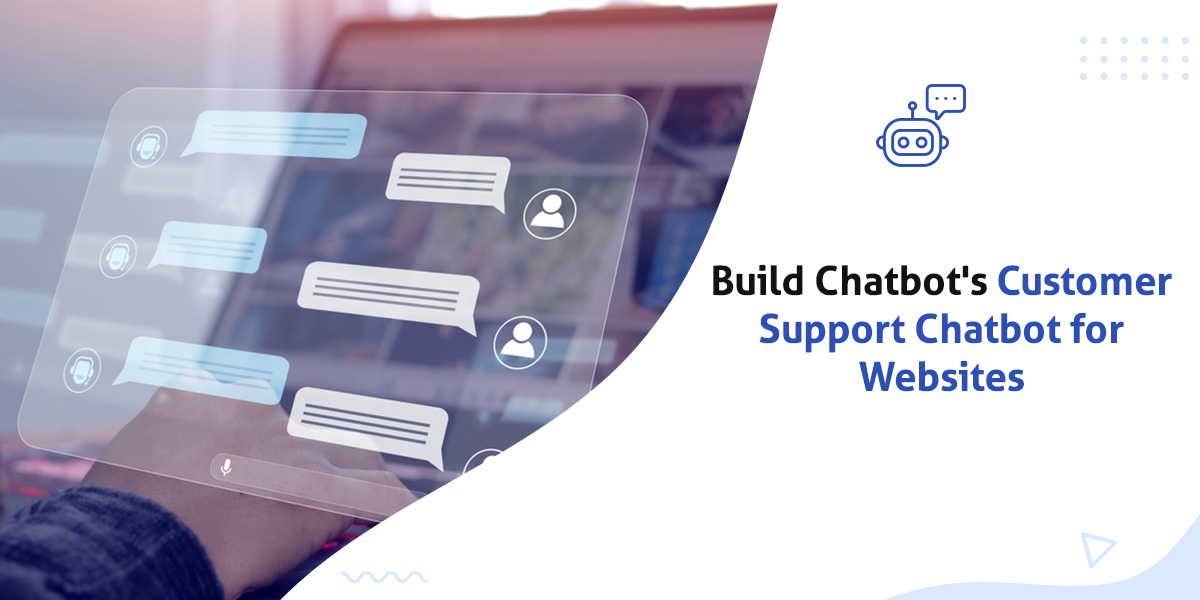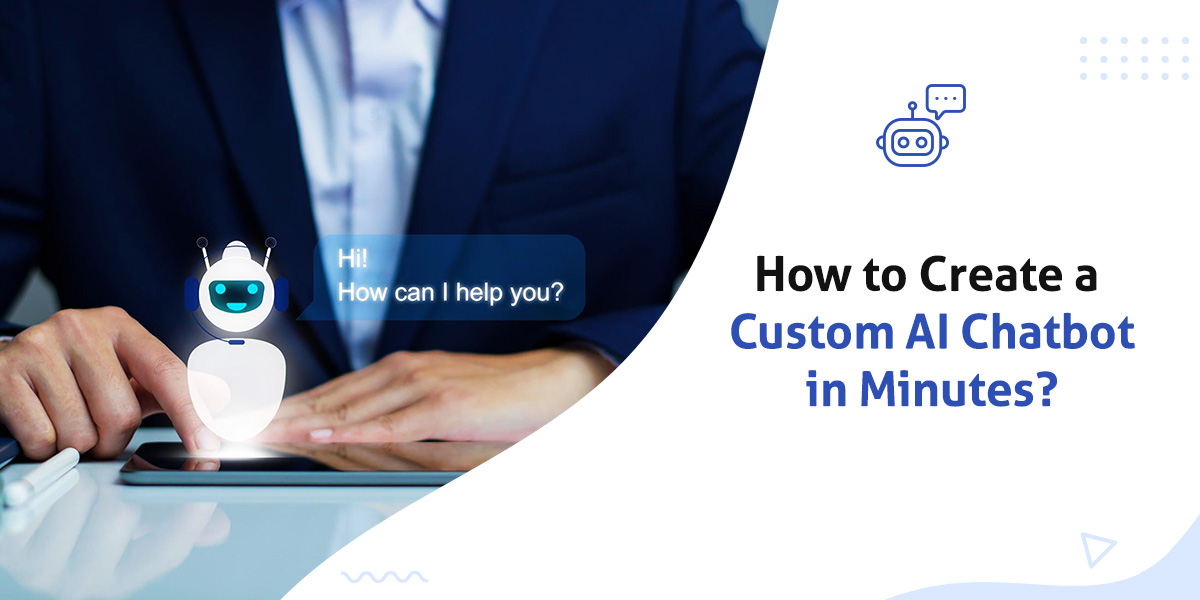Consider this: Your website is bustling with activity, your business is doing well, and then… your inbox fills up with incessant requests for customer support. Do you recognise this? We’ve all had been there, lost in a sea of emails asking questions like “What’s the return policy?” and “Where’s my order?” However, suppose there was an opportunity to relieve your team and yourself of this laborious task? Introducing the secret weapon of your future website: the customer support chatbot!
This goes beyond simple science fiction. Customer support chatbots for customer service are quickly taking over, revolutionising the way companies communicate with their clients. Imagine a perpetual virtual assistant that welcomes each visitor to a website, responds to their queries promptly, around-the-clock, and never needs a coffee break. Convenience is important, but that’s not the only benefit. Chatbots for customer service can significantly increase productivity, improve client satisfaction, and even customise the user experience.
How can you use this AI-powered marvel for your own website, then? Your one-stop resource for instructions on creating your own customer support chatbot is this blog. We’ll guide you through every step of the process, from selecting the best platform to creating captivating conversation flows, all the while offering insightful analysis and useful advice to make sure your customer support chatbot turns into a real customer service hero.
This guide is intended for both tech-savvy developers and marketing experts with little to no coding experience. We’ll simplify difficult ideas for you, provide you with the information and resources you need, and motivate you to embrace the direction that customer service is taking.
A website that never sleeps will greet you with greater productivity, satisfied clients, and a goodbye to monotonous work. Fasten your seatbelts and join me as we explore the intriguing realm of chatbots for customer support!
What Is A Customer Support Chatbot for Websites?
Envision a dedicated concierge welcoming each visitor to your website, skillfully addressing their inquiries, and leading them by means of your offerings. That’s the power of a Customer Support Bot, your on-demand, round-the-clock virtual assistant. These AI-powered customer support chatbots aren’t just science fiction anymore; they’re transforming the way companies engage with their clientele by providing immediate assistance and a tailored experience that turns your website from “good” to “wow.”
Your Customers’ Always-On Support Partner
Put an end to the annoying wait times and customer service hours. Customer support chatbots are always available to provide instant assistance to customers, day or night, and without the need for a coffee break. This instant accessibility fosters satisfaction and trust, transforming even routine questions into enjoyable interactions.
Principal Advantages of Using a Chatbot for Customer Service
- Enhanced Productivity: Release your human workforce from monotonous duties, enabling them to concentrate on intricate problems and significant exchanges.
- Increased Contentment with Clients: Fast responses, round-the-clock service, and tailored communication result in happier, more involved clients.
- Increased Website Conversion Rates: Assist users in making decisions, respond to important queries, and eliminate obstacles that prevent conversions.
- Decreased Operational Costs: Compared to conventional customer support techniques, automate routine tasks, answer simple questions, and save resources.
- Accumulated User Experience Data: In order to better inform future business decisions, analyse chatbot interactions to gain insight into client requirements, choices, and common pain points.
Why Would You Need Build Chatbot’s Customer Support Chatbot?
Easy Customization Without Coding Skills
One of the standout features of Build Chatbot is its user-friendly interface that allows businesses and individuals to create custom AI chatbot without the need for coding skills. This democratization of AI empowers a broader audience to harness the benefits of artificial intelligence in customer support, making it accessible to businesses of all sizes.
Data Extraction from Various Formats
Build Chatbot goes beyond typical text-based interactions. It boasts a powerful capability to extract precise information from a variety of file formats, including PDFs, CSV, Excel, DOCX files, URLs, and even audio and video files. This versatility ensures that the chatbot can seamlessly integrate with a diverse range of data sources, providing accurate and relevant information to users.
Insightful Chat History Feature
Understanding customers is key to providing exceptional service. Build Chatbot’s chat history feature allows businesses to gain insights into customer interactions. This valuable data can be leveraged to refine responses, anticipate needs, and ultimately enhance the overall customer experience.
Seamless Integrations for Enhanced Communication
Build Chatbot doesn’t operate in isolation. Integrations with popular platforms like Slack and Zapier make communication even more streamlined. This ensures that businesses can connect their chatbot with existing workflows, enhancing efficiency and collaboration within the organization.
Live Agent Chat Support
Finding the right balance between automation and human assistance is crucial for effective customer support. Build Chatbot achieves this balance with its Live Agent Chat Support feature. This ensures that customers receive personalized assistance when needed, while routine queries can be handled efficiently through automation.
Affordable and Flexible Pricing
Build Chatbot stands out not only for its advanced features but also for its commitment to affordability. With flexible pricing starting at just $19/month, businesses can enjoy the benefits of a top-notch customer support chatbot without incurring exorbitant development costs. The platform even offers a free trial, allowing users to experience its capabilities firsthand before making a commitment.
Extending Capabilities to Mobile
Recognizing the importance of accessibility, Build Chatbot has seamlessly extended its capabilities to a dedicated mobile app. This move enables businesses and individuals to monitor and respond to customer inquiries on the go. The mobile app enhances flexibility, ensuring that customer support is not confined to a desk but can be managed anytime, anywhere.
The Function of Chatbots for Customer Service
Consider your chatbot for customer service as an informative guide on your website. They welcome guests, respond to commonly asked inquiries, provide guidance, and even gather insightful input. Your team can focus on more intricate interactions by having them handle basic buying inquiries, track the status of orders, and offer basic troubleshooting steps.
Crucial Elements of a Successful Chatbot for Customer Service
- Natural Language Processing (NLP): Capable of comprehending and conversingly answering inquiries in natural language.
- Knowledge Base Integration: Obtain information from a database to provide precise and timely answers to queries.
- Customise responses based on each user’s profile and previous exchanges with them.
- Multilingual Support: Reduce language barriers and appeal to a worldwide audience.
- Analytics and Reporting: Monitor the effectiveness of chatbots and obtain insightful consumer data.
- Smooth Integration: Easily integrate with the infrastructure of your current customer service department and website.
Taking Care of Common Concerns: Chatbot Security and Privacy
When it comes to customer support chatbot, security and transparency are crucial. Give consumers control over their information, make sure strong safety precautions are in place, and communicate to them clearly how user data is gathered and used. Recall that establishing trust is necessary for the successful deployment of customer support chatbot.
An Alive, Breathing Helper for Customer Service: Assessing and Improving Your Chatbot
Keep in mind that your customer support chatbot is a dynamic extension of your brand, not a static tool. Therefore, it is essential to continuously assess and improve it to make sure it continues to function well and gives your customers the best experience possible.
Here’s how to go about this important procedure:
Analysing performance and testing
Constant Refinement and Improvement
- Natural Language Processing (NLP): To help your chatbot better understand user intent and deliver more accurate responses, regularly feed it new terms, phrases, and industry jargon.
- Knowledge Base Expansion: To make sure your chatbot can handle a larger range of questions and offer more thorough support, make sure it is constantly adding new content and FAQs to its knowledge base.
- Personalisation: Tailor chatbot recommendations and responses based on user information and previous exchanges. This increases customer satisfaction and makes the experience more engaging.
- Integrations: To enable your chatbot to offer appropriate information and support, investigate integrations with your CRM, product data bases, and other pertinent tools.
- User Interface Refinement: Examine data and user feedback to make your chatbot’s interface more visually appealing, intuitive, and easy to use.
You can make sure that your chatbot for client service stays a valuable tool that provides great service, raises customer satisfaction, and grows your business by regularly reviewing and improving it. Consider it an actual member of your team that is always growing and learning in order to become the best customer service hero possible!
Build Chatbot sets itself apart by not only delivering advanced functionality but also by prioritizing the creation of an interactive and friendly interface. As businesses strive to enhance user engagement and provide seamless interactions, the chatbot’s user-centric design becomes a valuable asset, fostering positive experiences and solidifying its position as a top-tier solution in the realm of conversational AI.



